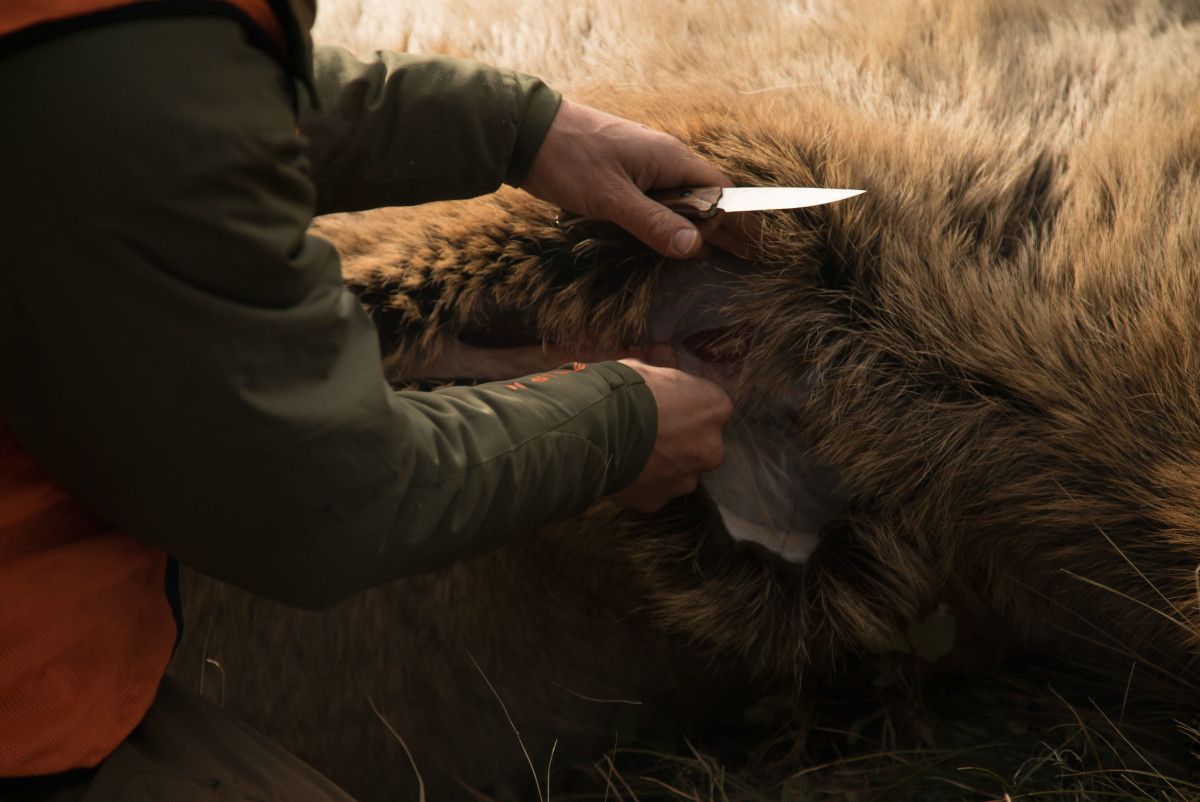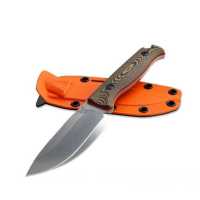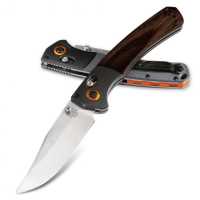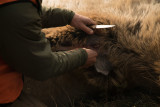
Knives are a crucial part of any hunter’s gear and choosing the right knife for the job is important when it comes time to cleanly break down an animal. Blade styles vary and some are excellent choices for all-purpose use while others are aimed at specific tasks. You’ll need to decide which blade suits your needs best. Some hunters tend to rely on a single knife while others use separate blades for different jobs. There’s also the consideration of fixed blades versus folders. Like many pieces of hunting gear, it’s always a good idea to invest in quality craftsmanship that will last rather than buying a cheap knife made with inferior steel. With proper maintenance, a good knife makes for a lifetime solid, sure strokes.
The right knife will not only make your field processing easier it will also make it safer. Dull blades, blades that are too short or too long, and cheap folding knives whose locking mechanisms fail are all common examples of knife-related problems that can lead to injury. I once quartered an elk with an inadequate multi-tool blade and it was a long, miserable experience that led to some minor gashes and puncture wounds that could have been much worse.
I started out using mostly folding hunting knives for their space-saving convenience. More recently, I discovered the folding, razor-sharp replaceable blade hunting knives. The cutting capabilities of the scalpels were impressive but the blades often broke when separating heavy joints. Not to mention their disposable nature didn’t sit well with me. There’s something to be said for a hand-crafted tool that lasts long enough to be passed on, which led me to fixed blade knives. I enjoy the fit and feel of a well-made fixed blade hunting knife and with no moving parts, there is nothing to break and manipulating them is safer.
Hunting Blade Styles
Drop Point
Boning Blade
Clip Point
There are all sorts of other specialty blade designs out there for various tasks. Some drop points feature a gut hook that won’t puncture internal organs while making abdominal incisions. Caping blades are short, shallow and sharply pointed for the precise detail work required when skinning around the heads, antlers and feet of animals. But these specific blade types aren’t necessary as long as a hunter keeps their knives sharp and takes their time while skinning and gutting animals in the field.
I like a four-inch blade for field knives. Longer blades become difficult to maneuver in tight spots and shorter blades don’t work as well for the long, deep cuts necessary for separating quarters or large muscle groups. I regularly use both drop points and skinners. I reach for a sturdy drop point for quartering elk and like the more agile boning blade for small game. And, I still prefer a folding clip point for everyday use or quick, unplanned bird hunting or fishing trips. Just remember, a good, sharp field knife like those made by Benchmade Knife Company will produce a better quality end product when it’s time to fill your freezer.
Brody Henderson is a hunter, fly fishing guide, writer, wilderness production assistant for the MeatEater television show and MeatEater‘s editorial contributor.





